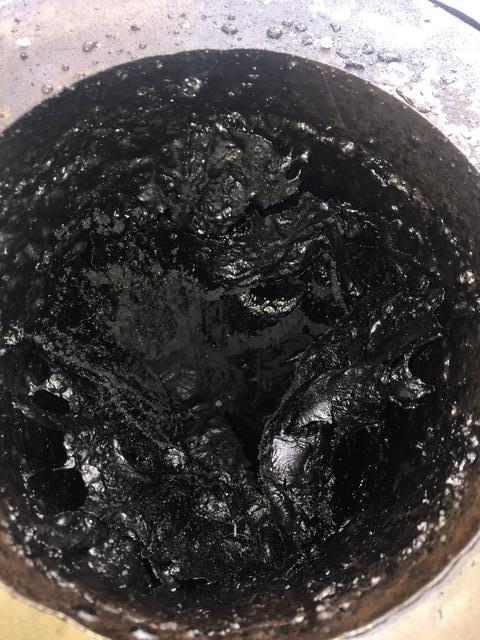Jeez....this is by far the worst I've ever let it get:
6" well casing, looked like it was filled with burnt potato chips:

6" well casing, looked like it was filled with burnt potato chips:



@ThePrincess says her grandfather used to drop a chicken down the flu a couple of times.Jeez....this is by far the worst I've ever let it get:
6" well casing, looked like it was filled with burnt potato chips:

I'm sure I don't need to point out that is..um..rather dangerous...Jeez....this is by far the worst I've ever let it get:
6" well casing, looked like it was filled with burnt potato chips:





It looks like you could do real well with a newer designed wood stove. A two or a three chambered wood stove would save wood, if a woodchuck could... sorry, I almost let myself go.Its just a chore that needs to be done. Usually I do it once a month, haven't kept up on it very well this year. Its been an odd winter.
My stove has a secondary air injection chamber but I never have the stove turned up high enough to actually use it. Usually the lowest smolder I can manage is still slightly too warm.
Downside of having walls two feet thick I guess. But really, cleaning the chimney is a ten minute job, I just need to keep up on it. I've just never seen it like this before. Usually its just a couple inches of fuzzy stuff on the inside of the pipe. This was weird paper thin bubbles and sheets of hard, shiny brittle creosote, almost like black soap bubbles or foam that had boiled up off the metal and frozen.
Throw a couple of empty beer cans in the fire every week or every month. Looking at your chimney I'd go with more often. A hotter fire might help too. Unburned gasses are cooling and condensing in your flue.
Same with us. We burn everyday for 5 months. 99% oak that has been seasoned for 4 to 5 years. The majority of our chimney is inside the house, so the chimney is always warm until it gets to the attic and exits the roof. Every morning we burn a hot fire. We never get any creosote. I still brush the chimney, but only once every few years.I been burning seasoned red oak, hickory , white ash , black locust for years.
Use to clean my chimney every fall. There was nothing to clean.
Now I run a brush thru it about every 3-4 years. Still nothing to clean.
I would avoid pine , cedar, and fir at all cost.
Jim
After a couple of beers you don't care about the chimney. Okay, okay, the aluminium oxide combines with the creosote and dries it out so it tends to fall down the chimney or be carried out the top. It reduces the chance for a chimney fire and helps keep the flue clean.What do beer cans do?
We've been using this method for as long as I can remember. We don't build a different fire when we burn cans. It's the aluminium.My theory is it's not so much the aluminum its the temperature that is necessary to "burn" the aluminum can, which is over 1000ºF. At that temp, the creosote in the chimney will quickly dry out or burn off. If you don't get your woodstove up to that temp, you'll have a firebox full of empty cans.

So, where it passes through the wood (or laminate) floor, is it cool enough to put your hand on the pipe?Its welded 1/4 thick 6" steel well casing. It's not insulated. It runs completely inside my three story house and acts like a radiator on every floor. It only cost about $100 at the local scrap yard for the 30' of pipe, a small fraction of what even single wall 22 gauge would cost.
Where it passes through the floors and roof I poured in place a 16x16 block of concrete between the joists/rafters. This is my go to method for running flues. In my shop, which has an oil furnace I did the same thing but for the wall where the flue goes through it.
You can see part of it on the right in this old picture from my second floor.

Enter your email address to join: